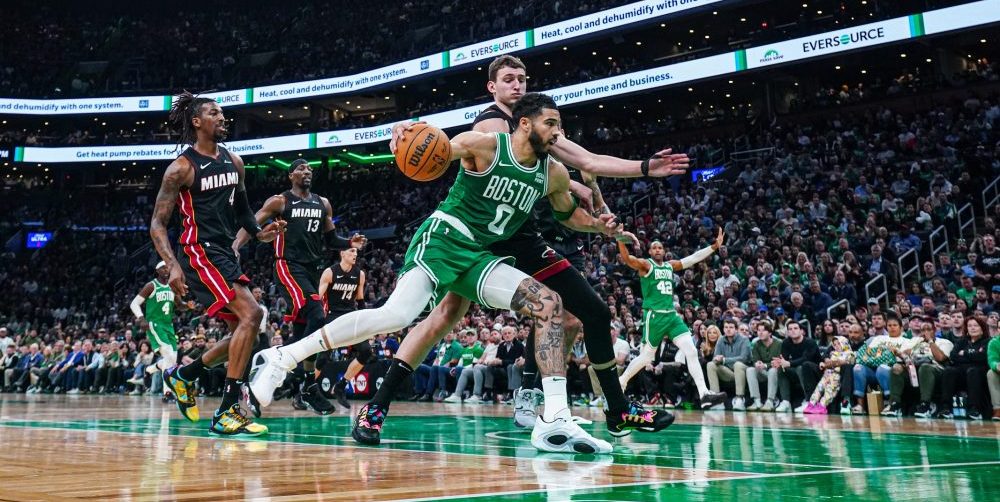The ESPN+ freight train continues rolling on. During Wednesday’s earnings call, the company announced that subscriptions for ESPN+ had increased to 21.3 million.
Disney reports it had signed on 21.3 million ESPN+ subs as of Jan. 1, which marks a 76% hike vs the year-ago period, when the service had 12.1M paying customers. Domestic Disney+ subs now at 42.9M, up 18% YOY from 36.3M. Excluding Hotstar customers, D+ global reach is 84M (+28%).
— Anthony Crupi (@crupicrupicrupi) February 9, 2022
For some context, here’s a brief rundown from our archive of the previously announced subscription numbers for ESPN+.
- April 2018: launch
- September 2018: 1 million
- February 2019: 2 million
- November 2019: 3.5 million
- February 2020: 7.6 million
- May 2020: 7.9 million
- August 2020: 8.6 million
- November 2020: 10.3 million
- February 2021: 12.1 million
- May 2021: 13.8 million
- August 2021: 14.9 million
- November 2021: 17.1 million
Man, that is a staggering increase, with subscriptions nearly tripling from where they were two years ago.
Subscriptions really began to spike when the Disney bundle when Disney+ went live in November of 2019. ESPN+ subscriptions doubled following that launch, and have continued increasing since. Another factor that likely had a (perhaps small) hand in the recent increase: the inclusion of ESPN+ (and Disney+) in the Hulu Live subscription package, which took effect at the end of last year.
In addition, the average subscription fee for ESPN+ users has increased, which is a good thing for the company.
With an average sub fee of $5.16 per user per month, ESPN+ now generates roughly $1.32 billion in annual revenue. That seems like an awful lot of scratch, but still pales in comparison w/ linear ESPN TV's $9.26B, assuming a $9.68 sub/mo fee and a distro of 79.8M HHs.
— Anthony Crupi (@crupicrupicrupi) February 9, 2022
In August of 2020, ESPN+ increased to $5.99 per month, and both the yearly price ($49.99) and Disney bundle ($12.99) remained unchanged. In July of 2021, the company announced that ESPN+ would be increasing to $6.99 per month, with yearly subscription prices increasing to $69.99 (it had previously increased to $59.99 in the year between monthly increases). The Disney bundle also increased to $13.99/month in the years since its launch.
Back at the end of 2018, when the bundle wasn’t a thing, the average cost was $4.67. At the end of 2019, following the bundle’s launch, it was $4.44. That number had barely moved at the end of 2020, sitting at $4.48. Now, two years later after the price increases, it’s up to $5.16.
It’s tough to compare this data to cable networks because of how tough it is to come across average subscriber fees and carriage estimates. But chew on this: in October 2020, Variety pegged ESPN2’s carriage fee at $1.04 per month. Last month, the Sports Business Journal reported that ESPN2 was in 79.65 million households. Over a full year, that’s $994 million in annual revenue – way less than ESPN+’s $1.32 billion. It even compares favorably to FS1, in 78.566 million households at an estimated $1.12 per month, or $1.056 billion per year. Yeah, carriage fees for both of those networks have more than likely increased since that Variety estimate a year and a half ago, but the comparison to ESPN+ is stark. NFL Network, in far fewer households at 57.452 million, pulls an annual revenue of $1.234 billion (again, based on that carriage rate from a year and a half ago) from fees, much closer than you’d likely expect.
Anyway, the sheer amount of money brought in by Disney’s networks (including ESPN+) is jaw-dropping, aided by both the cable bundle and the streaming bundle. For some of the chatter about a streaming bubble, Disney doesn’t appear to be there – at least yet.






